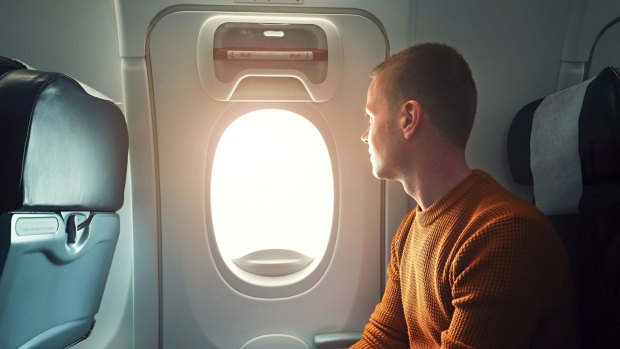This was published 4 years ago
What does 'arm doors and cross check' mean on a plane?

"Arm doors" means setting the doors to automatic mode so that emergency evacuation slides will deploy when the door is opened.Credit: iStock
As your aircraft moves away from the gate you'll hear this direction from the flight deck to the flight attendants, or be very worried if you don't.
It's an instruction to set the doors to automatic mode so that emergency evacuation slides will deploy when the door is opened.
The cross-check means that after arming their assigned door, the flight attendant should check that their opposite number has also armed their door.
As part of this procedure the flight attendants might also fasten a strip of red or orange tape diagonally across the window above the emergency slide.
Since the door is now armed, if it's opened the emergency slide will deploy and inflate.
Pressurised by nitrogen, the slide opens with explosive force and fully inflates within six seconds.
For anyone standing outside the aircraft when that happens, it would be like being hit by a giant fist.
The tape across the window warns airport personnel, who might be outside when the aircraft docks at an air bridge or aircraft stairs, that the door is not yet safe to open.
When the flight deck gives the command "disarm doors and cross check", the tape is removed.
ARE AIRCRAFT EVACUATION TESTS REALISTIC?
As a condition of certification, aircraft manufacturers are required to demonstrate that their aircraft can be completely evacuated in 90 seconds in an emergency.
In order to prove this, the manufacturer will conscript a planeload of "passengers" of different ages, genders and sizes, block a couple of exits, introduce smoke into the cabin and set off the alarms - and set the stopwatch ticking. There's plenty wrong with this scenario. The aircraft has not just come to a screeching, terrifying, metal-shredding halt.
There are no flaming engines, no blood, no hysteria, no banged-up bodies to climb over, nobody is trying to wrench their carry-ons from an overhead compartment.
The passengers in this demonstration are prepped, they know they're going to have to get out of a "stricken" aircraft, with zero chance of dying. Does this mean the 90-second rule is futile?
Not at all. In a real-life emergency, your chances of survival are far better in an aircraft that can be totally evacuated in 90 seconds, even if the proof fell short of reality.
See also: Oops: When flight attendants forget to disarm doors
See also: 'Non-stop' and 'direct' flights are not the same: 10 travel terms you need to understand
Sign up for the Traveller newsletter
The latest travel news, tips and inspiration delivered to your inbox. Sign up now.